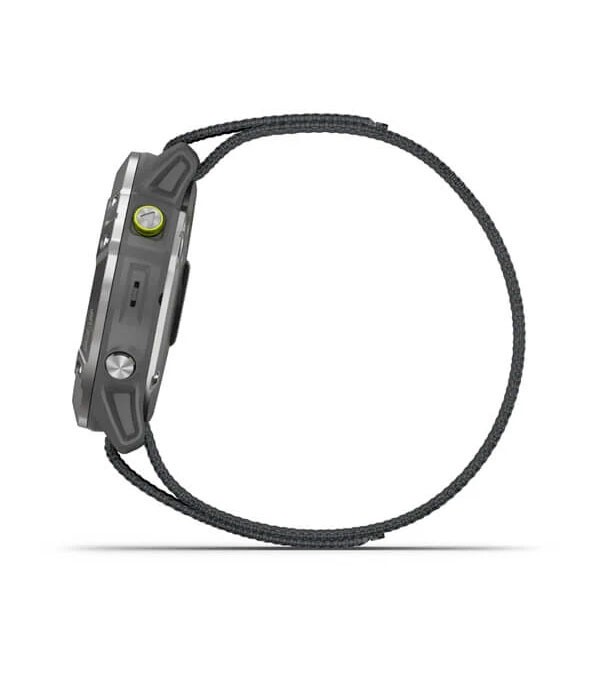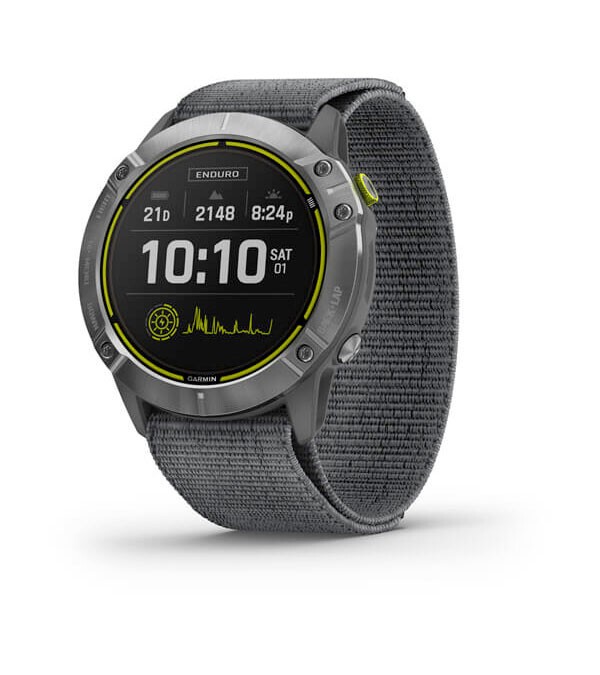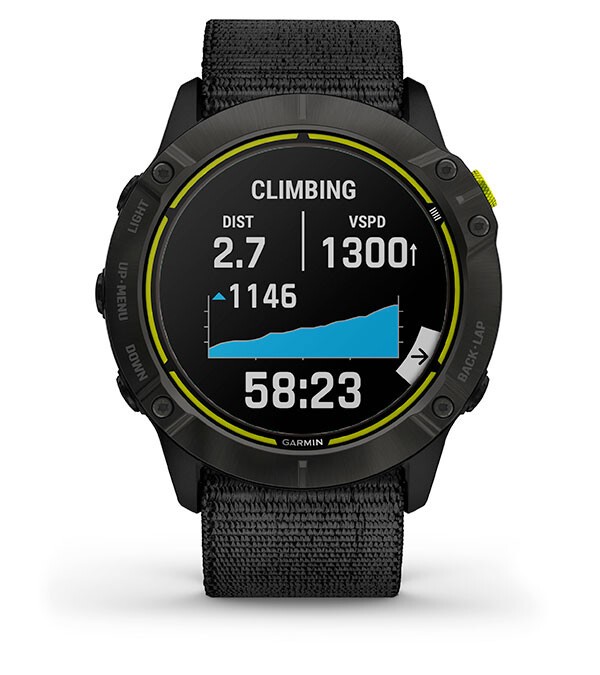Garmin is one of the main brands when choosing a heart rate monitor, but the brand expanded its horizon to include smartwatches and after the Garmin Lily, with a much less technical and “adventurous” profile, comes the new Garmin Enduro, designed for athletes who are self-conscious and picky about their watches.
It is a smartwatch with a design more typical of sports watches that stands out for aspects such as solar charging or autonomy. Designed to be resistant, the Enduro seeks to be useful for recording activities such as trail, MTB, or climbing among others.
Garmin Enduro Technical Specifications
| Garmin Enduro | |
|---|---|
| Dimensions and Weight | 51 x 51 x 14.9 mm Steel: 72 g Titanium 58 g |
| Screen | 1.4 ”(diameter 35.56 mm) Resolution 280 x 280 pixels |
| Operating System | Owner |
| Battery | Up to 50/65 days Up to 130 days / 1 year with screen saver mode With GPS: up to 70/80 hours With GPS + savings: up to 200/300 hours |
| Sensors | GPS, Glonass, Galileo, gyroscope, accelerometer, thermometer, pulse oximeter, barometer, heart rate |
| Connectivity | Bluetooth, ANDT + |
| Compatibility | iOS and Android |
| Additional Features | 10 ATM water resistance |
| Price | From $799.99 |
Built for Durability

As we mentioned, the construction and design this time around fit more in line with what we usually see in standard sports watches. The Garmin smartwatch is built in steel or titanium, the latter lighter, with a circular dial and two physical buttons.
To the eye, it is rather conventional and similar to other sports watches or heart rate monitors, but some aspects are not seen and that is worth noting such as solar charging and resistance to 10 atmospheres. Normally they remain at 5 atmospheres, thus giving more scope for those who are going to perform more extreme activities in this regard.

The screen is 1.4 inches with 280 x 280 pixels resolution. The interface looks very similar to what we see on their heart rate monitors in terms of areas and layout, being a MIP type color display.
Getting the most out of the day
Solar charging occurs via the display glass, a system the brand promises up to 1 year of autonomy if certain charging conditions are met (50,000 lux and at least three hours a day) and in battery saving mode. In normal use (without GPS) the Enduro promises up to 50/65 days and with GPS up to 80 hours.

As for activity logging, it has specific functions dedicated to running, cycling, climbing, golf, general open activities, and swimming among others. It records VO2 max (the maximum volume of oxygen the body can process during an activity), heart rate, offers sleep recording, and also integrates a pulse oximeter to measure oxygen saturation.
In addition to this, with its satellite communication function, users can send and receive messages (or share location) quickly (without resorting to a data network). It also has an SOS signal function for emergency notification.
Garmin Enduro versions and pricing
The Garmin Enduro is available starting today in the United States. The starting price is $799.99 (about €661.83 at the exchange rate) for the steel version and $899.99 (about €744.56 at the exchange rate) for the titanium version.
This post may contain affiliate links, which means that I may receive a commission if you make a purchase using these links. As an Amazon Associate, I earn from qualifying purchases.

